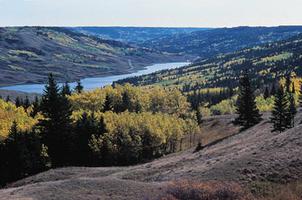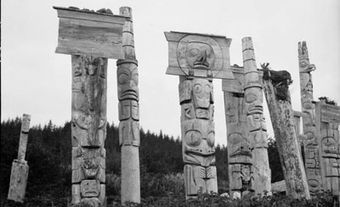Natural History
At 600 m above the prairies, a unique combination of climate and geology results in habitats for rare species or species more typical of the ROCKY MOUNTAINS. The plateau supports grasslands while the steep north-facing escarpment is forested by lodgepole pine, white spruce and aspen. Over 750 species of plants have been listed for the park. Thirteen species of orchids, 8 of which are rare, have been identified. Wildlife is similarly diverse, from large ungulates to over 230 species of birds.
Human History
Archaeology sites suggest almost continuous occupation for the past 7000 years. More recently, the hills were a major wintering area for the Nez Percé, Cree, Assiniboine, Métis and others, providing shelter, fuel and abundant game animals. A private account for 1873 recorded 1500 lodges of Natives and 200 families of Métis attracted by the dwindling herds of BISON. Responding to the Cypress Hills Massacre of 1873, the NORTH-WEST MOUNTED POLICE established Fort Walsh in 1875. From 1906 to 1930 parts of the Cypress Hills were managed as a dominion forest reserve. Cattle ranching started in the late 1800s and continues to this day.
Facilities
On the Alberta side of the park, facilities are centred on Elkwater Lake, 65 km southeast of Medicine Hat. Included are 450 campsites, a ski hill, store, restaurant and 250 private cottages. Saskatchewan's resort area is in the Centre Block, south of MAPLE CREEK. Included are some 450 campsites and 200 private cottages, as well as cross-country ski trails, a golf course, a swimming pool and a year-round resort.

 Share on Facebook
Share on Facebook Share on X
Share on X Share by Email
Share by Email Share on Google Classroom
Share on Google Classroom




